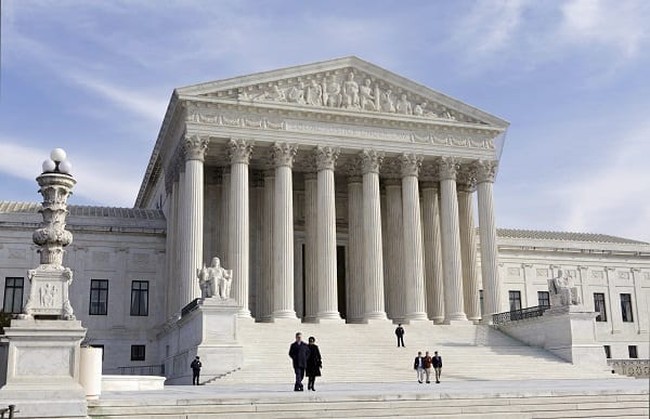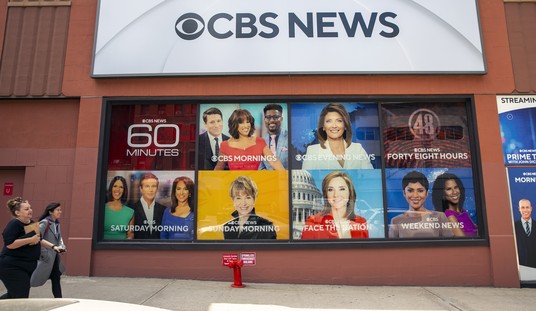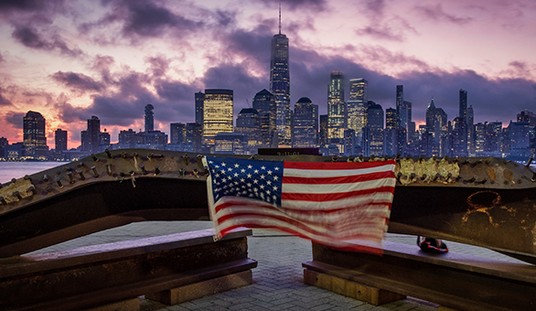=========
=========
Promoted from the diaries by streiff. Promotion does not imply endorsement.
=========
=========

FILE – This Jan. 25, 2012, file photo, shows the U.S. Supreme Court Building in Washington. The Supreme Court enters its final week of work before a long summer hiatus with action expected on the Trump administration’s travel ban and a decision due in a separation of church and state case that arises from a Missouri church playground. (AP Photo/J. Scott Applewhite, File)
The United States Supreme Court will convene on February 19th for their February sitting. They are scheduled to hear eight cases- two of which are of importance to conservatives. Decisions in these two cases will be closely watched. The following is a summary of all eight cases to be heard.
Feb. 19th- US Department of Commerce vs. US District Court for Southern District of New York
The Department of Commerce, which is responsible for the census every ten years, decided to include a question about citizenship on the form in 2020. Several immigrant rights groups immediately sued in federal court arguing that such a question would discourage illegal immigrants from responding. This would, in turn, create an artificial decrease in the reporting of actual population. The government retorts that the question had previously been used in the census and that some Census Bureau surveys still use the question.
This is a less a case about the constitutionality of the question itself than it is about the power of courts to delve into the machinations of Executive Branch decisions. There are procedures for those decisions spelled out in the Administrative Procedures Act. For a plaintiff to prevail, they must prove that an Executive Department decision was arbitrary and capricious. Courts determine this through review of the administrative record. In this case, the District Court ordered the deposition of Commerce Secretary Wilbur Ross and other Executive branch officials.
Most of the arguments of those opposed to the question are speculative. Thus, from the start these immigrant rights groups may not even have standing to bring a case of this nature. But, assuming they do, the Court must then reach the vital question of the ability of a District Court to demand the testimony of an official. If not, then all that is left is whether the decision to include the question was “arbitrary and capricious” and nothing in the administrative record suggests that it is.
Feb. 20th- Return Mail Inc. vs. US Postal Service
Under patent law, a specific regime was established by Congress to deal with the expeditious and economical resolution of patent claims. The main question before the Court is whether the government satisfies the definition of “person” in the applicable law.
Feb. 20th- Mission Product Holdings vs. Tempnology, LLC
A statutory interpretation case involving the bankruptcy code. Zzzz…
Feb. 25th- Gray vs. Wilkie
In this case, the Court must decide whether a veteran can challenge a Veteran Affairs Department rule or regulation directly in federal court or not.
Feb. 25th-Manhattan Community Access Corp. vs. Halleck
Cable operators are required to obtain a franchise from a city and one condition is that set aside channels for public access channels. Under New York law, these channels must be run by not-for-profit corporations. Additionally, the state and local communities cannot interfere in their affairs or content of the programming. In this case, Halleck was an employee claiming they were harassed by the public access company in Manhattan- Manhattan Community Access. She was subsequently suspended for an on-air diatribe whereupon they sued under state law claiming constitutional violations. The lower courts determined that Halleck had a right to sue since the company was, in effect, a state actor. And that is the question before the Court: Are private operators of public access channels state actors?
Feb. 26th- United States vs. Haymond
This is a Fifth Amendment case. Haymond was originally sentenced to 36 months in jail and ten years of supervised release for possession of child pornography. During his release phase, he was again caught in the possession of child pornography on his cell phone. Based upon that evidence, the trial judge ruled him in violation of the terms of his supervised release and sentenced him to a minimum five years in prison. The 10th Circuit eventually ruled that the portion of federal law that dictated the 5-year post-release sentence was unconstitutional and violated the defendant’s right to a trial.
Feb. 26th- Mont vs. United States
Another complicated case involving whether supervised release and pretrial confinement for another offense. In other words, person A receives 5 years supervised release. Within those 5 years, they commit another crime and are confined before trial. Does the five year clock continue to run while that person is confined?
Feb. 27th- American Legion vs. American Humanist Association
This is the case involving a World War I memorial to dead American soldiers in the shape of a cross. The fact it is shaped like a cross is the first constitutional question that must be answered. If constitutional, the next question is whether a passive display which incorporates religious symbolism can be analyzed under any previous Supreme Court decision. Assuming it can, then does the expenditure of funds for its upkeep represent an entanglement of government and religion?
One must keep in mind that the memorial in question here was constructed 93 years ago- long before our politically correct, “humanist,” and anti-religious culture that exists today. It seems weird that for 93 years this memorial offended no one, other than some modern-day “humanists.” This is another ridiculous case, in the views of true conservatives, where the secular Left- through mouthpieces like the American Humanist Association- are attempting to wipe out any semblance of religion in public life. To them, they would rather relegate the practice of religious beliefs behind locked doors for an hour every Sunday.
The fact is that this is not even an endorsement of a particular religion or religion in general. The Court could have sidetracked this issue a few terms ago when a similar case was heard about a memorial using religious symbolism in a national park. Instead, in typical Roberts fashion, the Court decided to so-narrowly decide the case that they avoided the bigger implications and left the lower courts in legal and constitutional limbo.
Let’s hope with Gorsuch and Kavanaugh, they have the intestinal fortitude to tell the American Humanist Association to stick their heads where the sun doesn’t shine and go to H-E-double hockey sticks. Should they do so, expect the Left to erupt in indignation about the impending theocracy descending over America.













Join the conversation as a VIP Member